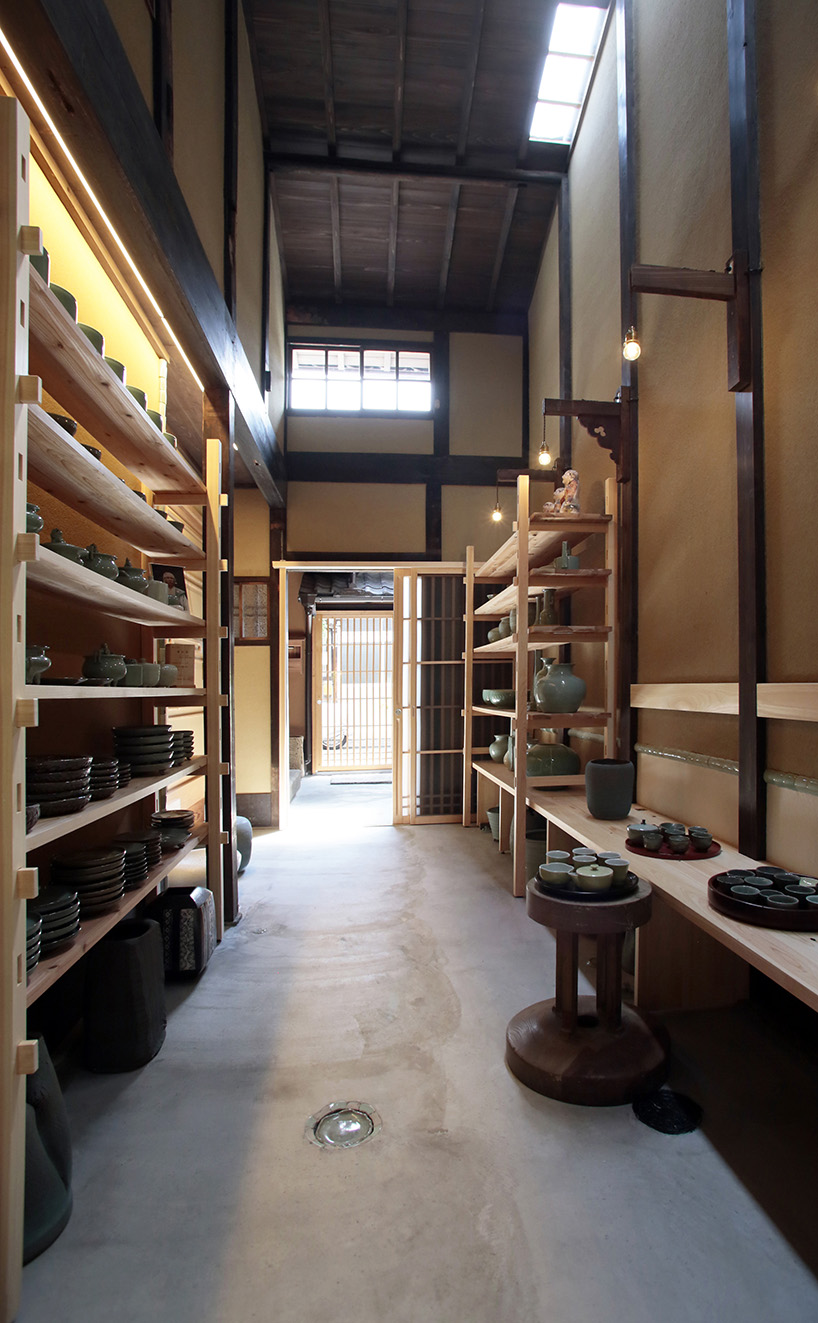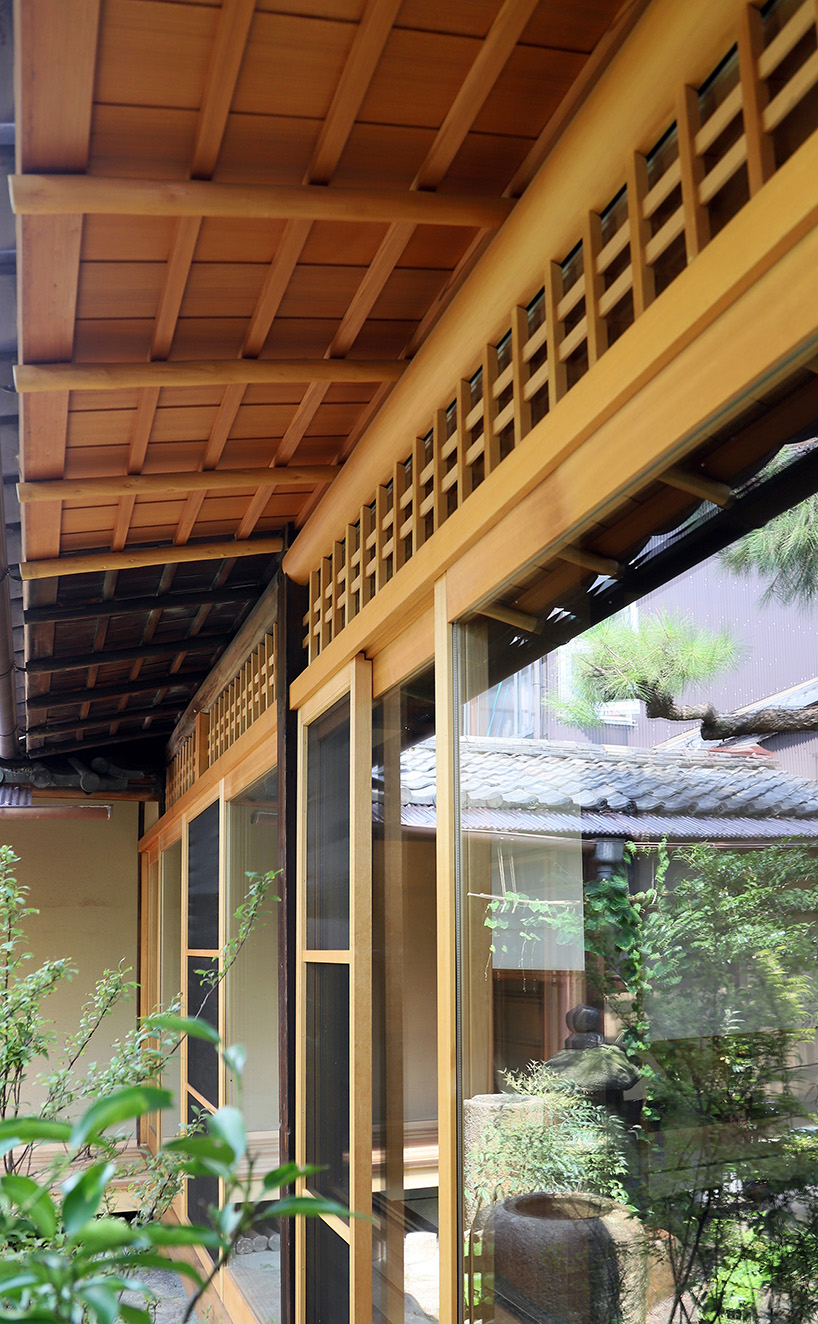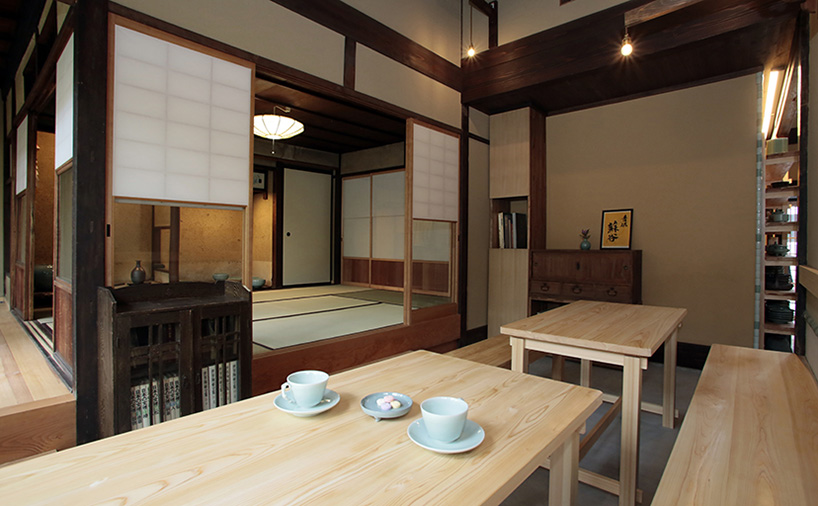atspace architects converts kyoto machiya townhouse into SOKOKU celadon gallery + café
atspace architects’ sokoku gallery and café in japan
AtSpace Architects has renovated a Kyoto-style machiya — traditional Japanese wooden townhouse — to house the new SOKOKU celadon gallery and café. Located at the foot of Gojozaka, Kyoto, famous for its traditional Kiyomizu-ware ceramics, the original structure was built in the early 1900s by ceramic artist Hatta Sokoku. The space initially doubled as a residence for the artist and a pottery workshop with a custom-built celadon kiln, and it has since been passed down from generation to generation before being recently renovated by AtSpace Architects. The Japanese architecture studio’s redesign of SOKOKU emphasizes the architectural origin of the building, which is reflective of its historical and regional characteristics, while creating a public gallery and café as well as a comfortable living space for the owner.
With SOKOKU AtSpace Architects seeks to preserve the deteriorating traditional form of the wooden house, allow the owner to live comfortably without disturbance, and build a new gallery and café to showcase Sokoku’s celadon works. ‘We defined the design intent of each as updating living functions according to modern requirements and preserving a cultural asset by restoring its original style’, note the architects.

the gallery showcases and sells Kiyomizu-ware ceramics made by Sokoku
all images courtesy of AtSpace Architects
preserving kyoto’s regional and historical characteristics
The residence at SOKOKU is compactly reorganized, with improved thermal insulation achieved by new inner window sashes and floor heating. In the interior of the retail space the earthen floor and veranda-like porch that characterize Kyoto-style homes have been restored. Uncharacteristic of traditional machiya, the Kyoto-based architecture studio places the storefront of SOKOKU further in the back of the building, allowing the porch and the cultural okuzashiki — inner room of a traditional Japanese house — to be preserved, and making the rear garden more widely accessible. The inner room is defined as the buffer between the residence and retail spaces, to function for both festive occasions and everyday life.
In the gallery and café, AtSpace Architects filters natural light into the space through evenly distributed skylights in the characteristic smoke exhaust atrium called hibukuro. The soft light reflects from the clay walls, softly illuminating the display of delicate celadon ceramic works. Cylinder containers for tea cloths are embedded into the clay walls as a protective material, and ashtray lids are converted to wastebasket slots — all made from defective celadon porcelain pieces by Sokoku.

the building enhances the streetscape with newly repaired eaves
the gallery showcases the notable ceramics of Sokoku
While the exterior appearance of the residence is maintained, the building enhances the streetscape with newly repaired and preserved eaves and latticed bay windows on the façade. AtSpace Architects has replaced the damaged posts and beams with new joints and restored the crumbling mud walls by reweaving the bamboo underlayer and applying soil. In addition to facilitating future updates, SOKOKU is also designed to contribute to environmental conservation by recycling local resources and using building materials with a high recycling rate. The project also preserves the traditional techniques of tile-roofing and mud-plastering.
Speaking of the objectives of SOKOKU, the architects say: ‘We aim to provide social value to a much broader extent beyond a temporal generation and the land on which it is built’. ‘We hope this renovation will become part of its historical legacy and be carried on into the future’. The project received donations to preserve the public values of Kyoto-style machiya, and the building was designated as a Structure of Landscape Importance in 2022 after the renovation.

the cafe and Zashiki room
